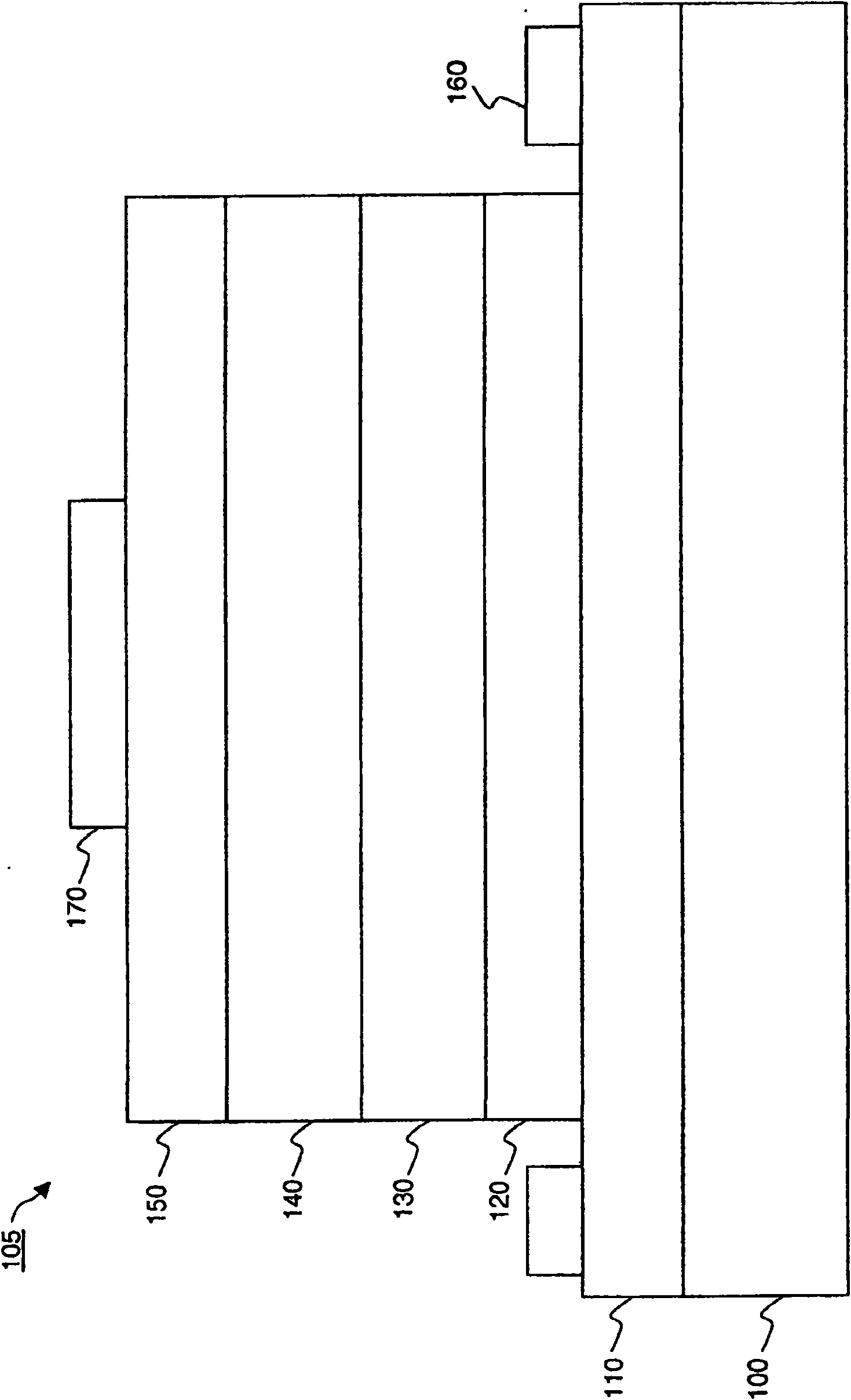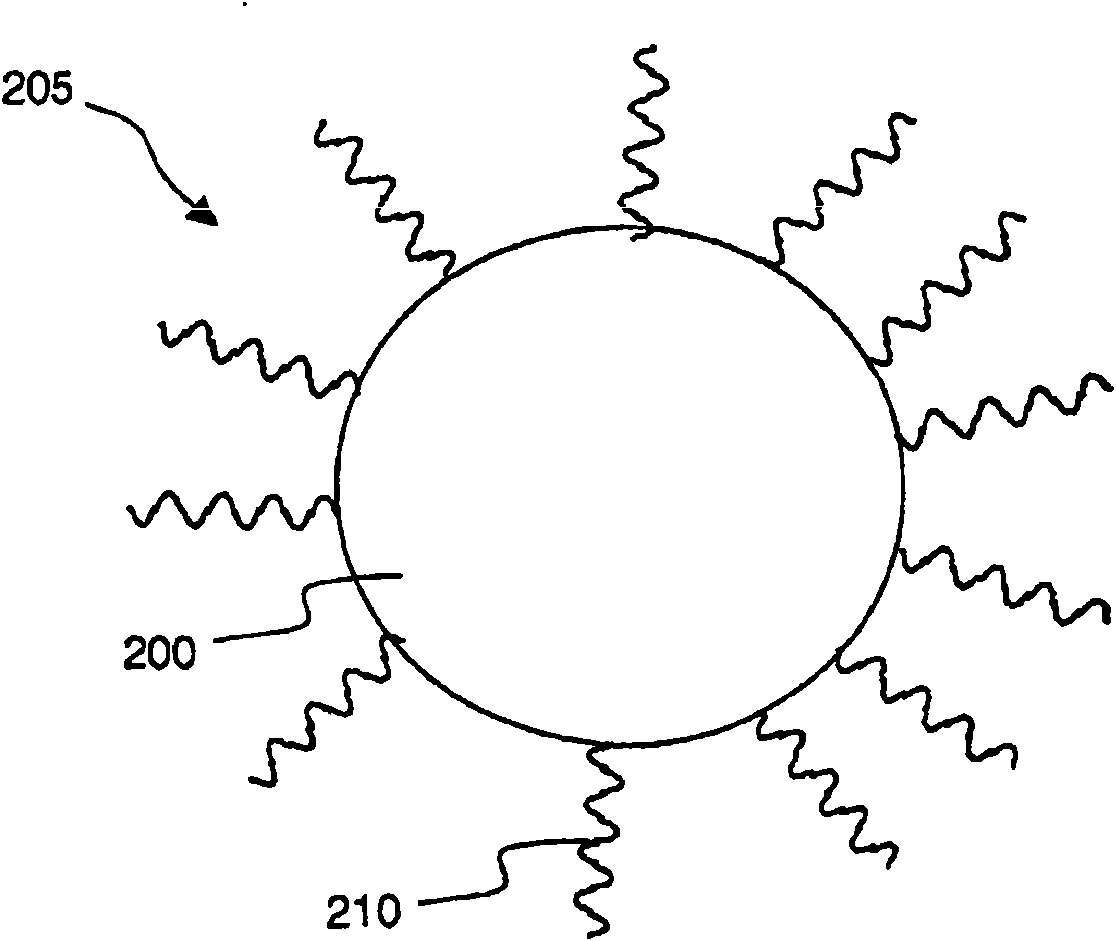Ex-situ doped semiconductor transport layer
A semiconductor and external doping technology, applied in semiconductor/solid-state device manufacturing, electrical components, nanotechnology, etc., to achieve low cost, simple method, and reduce ohmic heating
- Summary
- Abstract
- Description
- Claims
- Application Information
AI Technical Summary
Problems solved by technology
Method used
Image
Examples
Embodiment 1
[0039] Doped and undoped semiconductor transport layers are formed on a glass substrate. The test system is ZnTe, with and without Cu doping (acceptor of ZnTe, which substitutes on cationic sites). Undoped ZnTe semiconductor nanoparticles 310 were synthesized by employing procedures commonly used to form ZnSe spherical dots (M.A. Hines et al., J. Phys. Chem. B102, 3655 (1998)). More specifically, 4 g of dried and degassed hexadecylamine (HDA) was charged into a three-necked flask, and then heated to 290° C. on a Schreck line in an argon atmosphere. For the Te precursor, a 0.25 M solution of Te in TOP (called TOPTe ). The resulting solution was clear and had a greenish-yellow appearance. In a dry box, a syringe was charged with 0.4 mmol of diethylzinc (from a 1 M solution of diethylzinc in hexane), 1.6 mmol of TOPTe and 2.0 ml of additional TOP. The contents of the syringe were quickly injected into the three-necked flask while the solution was stirred vigorously. As a res...
PUM
| Property | Measurement | Unit |
|---|---|---|
| particle diameter | aaaaa | aaaaa |
| thickness | aaaaa | aaaaa |
Abstract
Description
Claims
Application Information
 Login to View More
Login to View More - R&D
- Intellectual Property
- Life Sciences
- Materials
- Tech Scout
- Unparalleled Data Quality
- Higher Quality Content
- 60% Fewer Hallucinations
Browse by: Latest US Patents, China's latest patents, Technical Efficacy Thesaurus, Application Domain, Technology Topic, Popular Technical Reports.
© 2025 PatSnap. All rights reserved.Legal|Privacy policy|Modern Slavery Act Transparency Statement|Sitemap|About US| Contact US: help@patsnap.com



